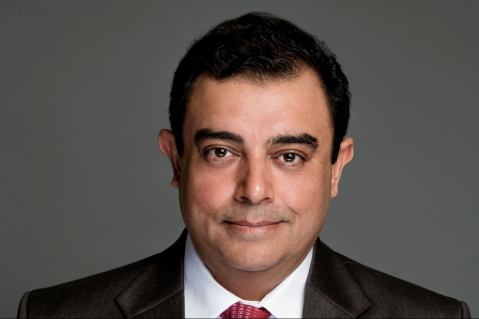AI at the Edge: The Future of Smart Cities and How Entrepreneurs Can Get Involved
Edge AI changes how a traffic light works, how a building cools itself, or how a shop knows when to restock. And in the Middle East, we have the opportunity to lead.

As an entrepreneur building real-world tech, I’ve seen how the idea of a ‘smart city’ is no longer futuristic but is happening right now. Around the world, we’re witnessing bold urban innovation from next-generation infrastructure to comprehensive smart city strategies that are reshaping how we live and work. In the Middle East, projects like NEOM‘s infrastructure and Dubai’s Smart City strategy, are leading this transformation and setting global benchmarks. One of the most exciting shifts I’m seeing on the ground is the rise of Edge AI, where intelligence is moving out of the cloud and closer to where life happens and for entrepreneurs, this evolution presents a rare window of opportunity.
In my work helping design intelligent environments, I’ve watched Edge AI turn passive spaces into systems that respond, adapt, and serve people, not just collect data. When cities can think, respond, and adapt in real-time, we move beyond smart into something far more impactful: truly human-centric environments.
Why Edge AI Matters Now
At its core, Edge AI means putting AI directly onto devices. Whether it’s a traffic camera, a building sensor, or a delivery robot, the data can now be processed where it’s generated, not sent halfway across the world to a cloud server. That local processing power dramatically reduces lag, enables real-time responses, and removes a lot of the friction that slows down traditional smart systems.
For instance, an edge-enabled traffic system doesn’t need to send video feeds to a distant server. Instead, it can process visual data on-site to detect congestion, adjust signal timing, and ease the flow, all in milliseconds. In smart security, AI-enabled cameras can identify unusual behavior and alert authorities immediately, without waiting for cloud approval.
Why is this so important in the Middle East? Because we’re talking about cities with high population density, fast-growing infrastructure, and extreme environments. Delays, even in seconds, can have major implications for safety, mobility, and energy efficiency.
How the Middle East is Leading the Charge
The UAE, Saudi Arabia, and Qatar are all making significant investments in AI and smart city infrastructure. This is amplified by progressive policies, such as the UAE’s National AI Strategy 2031, which envisions the Middle East as a hub of innovation. Governments are fostering ecosystems that attract entrepreneurs, accelerating the deployment of transformative solutions. Public-private collaborations are thriving, creating fertile ground for startups eager to solve pressing urban challenges.
Where Entrepreneurs Can Make a Difference
Edge AI opens a range of opportunities across sectors. Here are five areas where I see real potential:
- Urban Mobility and Logistics: From micro-mobility optimization to edge-powered parking systems, there’s a huge demand for localized intelligence that improves flow, reduces emissions and eases congestion.
- Energy and Water Management: Smart meters and distributed energy resources can use edge AI to detect leaks, forecast demand, and balance grid loads in real-time, critical in resource-scarce environments.
- Retail and Commerce: In malls and airports, edge-powered analytics can improve foot traffic insights, queue management, and personalized experiences, especially where connectivity may be inconsistent.
- Public Safety and Emergency Response: Real-time data from cameras, drones, and sensors can assist emergency services, enabling faster and more informed interventions.
- Healthcare: Edge AI can be used in clinics and homes to monitor patients, reduce hospital load, and enable telemedicine services where latency and privacy are critical.
How to Get Involved: Practical Strategies – So how can entrepreneurs position themselves to ride this wave?
- Start with local problems. Edge AI works best when it solves immediate, contextual issues. Partner with municipalities or infrastructure providers to understand what’s really needed.
- Think modular and scalable. Build tools that can plug into existing city systems or be deployed independently in smaller settings like malls, campuses, or transit hubs.
- Prioritize security and privacy. Public trust is vital. Implementing robust safeguards around data collection and use will differentiate you in a highly sensitive space.
- Embrace interoperability. Edge solutions must work across networks and standards. Open architecture and API-driven development will help ensure longevity and integration.
- Leverage the region’s accelerators. Tap into platforms like Hub71 in Abu Dhabi, Area 2071 in Dubai, or NEOM’s innovation programs. These offer funding, market access, and pilot opportunities.
The Edge Is Just the Beginning
We often think of innovation as something distant or abstract. But with Edge AI, the impact is tangible. It changes how a traffic light works, how a building cools itself, or how a shop knows when to restock. And in the Middle East, we have the opportunity to lead.
Smart cities are no longer just about connectivity; they’re about intelligence at the edge. Of course, that intelligence needs to be human-first. As entrepreneurs, we’re not just building better tech. In reality, we’re shaping how people experience the cities they live in.
Related: Scaling Smart: How AI Solutions Help Dubai Startups Grow More Efficiently





